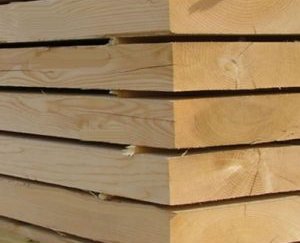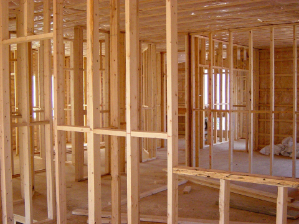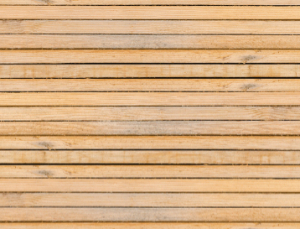Common uses of timber in construction
What are the common uses of timber in construction? We look at the benefits of using wood and timber frame buildings in construction projects.
What are the benefits of using wood in construction?
When responsibly sourced and managed, wood can have a renewable life cycle. Timber is highly durable, making it easier to reuse and recycle.
A solid wooden structure can reflect sound well and easily be created into surfaces that channel sound reflections.
This feature is utilised for things such as musical instruments and concert halls.
Wood is structured with air pockets making it an excellent natural insulator.
Timber insulates far better than masonry, steel, concrete and aluminium. Lightweight timber framing methods can also allow the easy installation of added fibre or foil insulation.
Due to its improved thermal performance, buildings assembled using timber require substantially less energy to heat and cool, resulting in lower energy bills.
Wood is exceptionally adaptable. Wooden structures are accommodating and easy to adjust to various situations and sites.
Softwood and hardwood timber can be very straightforward to build with, dismantle, and rebuild according to changing requirements.

Research articles have found that using natural resources and elements such as wood within our living environment not only spruce up your surroundings.
Still, they can also significantly reduce stress and help relaxation, attention and production.
Wood is typically quick and easy to manufacture and only requires a few preparation steps before it is ready to be used in construction.
The forestry process includes cutting and sawing the trees from forests, removing irregular edges and defects, squaring off the ends of the lumber, segregating pieces based on dimensions, stacked with spacers, dried, smoothed and then graded.
Using natural elements such as wood in construction involves agriculture and farming practices, meaning rural individuals, for example, can acquire employment opportunities in smaller-scale industries, improving income and living conditions.
Timber products have ignition resistance and a low heat release rate. Timber can resist burn-through and maintain structural integrity for a relatively long time whilst providing continued protection when exposed to fire or heat.
Wood products can be remarkably resilient, making them very structurally stable building materials.
Wooden timber is a highly durable material. Some well produced wooden structures can last for years and years into the future.
It is also straightforward and incredibly cheap to maintain compared to other suitable materials, especially if you don't mind the colour changing slightly over time.

Benefits of using timber frame building
Wood is an incredibly sustainable material and therefore does not harm the environment. That is why constructing buildings with wood, most notably timber, is increasing in popularity.
It provides excellent benefits when combined with intelligent planning, high precision, well-monitored construction, and high-quality implementation. Wood is a valued construction material, and the use of timber frames is prevalent around the world.
Timber is one of the few natural materials available for building, and it has various advantages.
Wood is generally toxin-free, safe to handle, and does not leak any chemical vapour into the buildings. It also means that as the timber ages, it will do so naturally.
Timber framing allows custom-made structures that are remarkably sturdy and durable.
There are a number of advantages associated with timber frame construction; however, its most renowned quality is its environmental excellence.
When using timber for construction, there is an excellent degree of flexibility. Transportation costs are also considerably lower because wood is incredibly lightweight.
People have been using timber to build for hundreds and thousands of years. Wood is an ecological, sustainable and renewable building material that is grown faster than used.
Most of the leading wood supplying countries have long-standing policies related to re-growing more trees than are cut down from forests. If millions of new trees are being planted to replace the timber that has been harvested from the forests, then hardwoods and softwoods will continue to be readily available.
Minimal energy is required to transform the wood from trees into timber for buildings, meaning the integrated energy in wood is low. It is actually the lowest of almost all the standard building materials.
Wood is a natural insulator that can help significantly reduce energy needs when used in windows, doors, and floors.
A timber frame provides more area for insulation than brick buildings would, and wood also has naturally thermally insulating properties. A better-insulated home requires less energy to heat up and cool down, meaning less money on bills.



Wood also has superior insulating properties than steel. The wood structure contains tiny air pockets, limiting its ability to conduct heat and helps to seriously minimise the energy needed for heating and cooling, providing energy-efficient homes with a lower carbon footprint.
Timber is highly versatile and can be easily used in various ways. Wood is relatively lightweight, meaning it is easy to install and work with.
Different tree species will produce timber of differing colours, textures and functional qualities, meaning endless design possibilities.
The pace of construction is swifter with timber. A timber frame can be pre-cut and built to precision, making development much quicker than a brick build. Time is also saved, as less building debris is left around to clear.
Are you looking for timber delivery in Manchester and the surrounding areas? We offer a range of timber cut to size for Manchester, Liverpool, Preston, Oldham, Stockport, Warrington and the surrounding areas.

